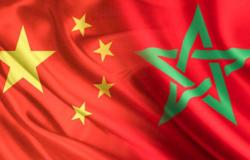Ramazing a series of questions on the theme “The management and valuation of water resources in light of recent rains and snowfall”the minister stressed that “This high rate had not been reached for several years”specifying that the deductions from the dams are currently amounted to 6.61 billion cubic meters, to which are added 280 million cubic meters of water collected in the new dams made since 2022.
Baraka noted that the water and snow intake in the dams, from last September until this day, have reached a total of 3785 million cubic meters, detailing that the Loukkos basin recorded an contribution of 448 million m³, while the volume of water resources in the Bassins of Moulouya and Sebou amounts to 450 million and 1.160 billion m³ respectively.
Regarding the Al Wahda dam, deductions exceeded 2 billion m³, against 580 million for Oum Errabia, 81 million for Tensift, 139 million for Souss-Massa, 284 million for Drâa-Oued Noun and 275 million m³ for the Guir-Ziz-Rheris basin.
In this context, the minister said that Morocco has gone from a stress of acute water stress to a situation of moderate stress, thanks to the last precipitation. However, he said that these rains remain 25 % lower compared to the seasonal average.
He also said that recent data reports a 58 % drop in usual water resources, despite an improvement of 45 % of water intake compared to the previous period.
Regarding the valuation of these resources, Baraka assured that the recent rains allowed the kingdom to guarantee the supply of drinking water for a period of at least a year and a half, adding that “The concerns that weighed on water management during the summer are now excluded for all hydraulic basins, with the exception of the southern provinces who are experiencing a particular situation”.
These water intake will also provide additional water volumes for agricultural irrigation, he added.
The Minister also indicated that the construction of desalination stations continues at a sustained pace, with a current capacity of more than 300 million cubic meters, thanks to the joint efforts of the National Office of Electricity and Drinking Water (ONEE) and the OCP group.
Baraka stressed that 80 % of drinking water supplying the provinces of Berrechid, Settat, Had Soualem and Casablanca Sud now comes from these new resources, made possible by the extension of the Jorf Lasfar station, adding that the city of Safi is now supplied 100 % in drinking water resulting from sea water desalination.
Thanks to hydraulic interconnection and desalination, he continued, the sustainability of the drinking water supply from the Al Haouz and Marrakech region is guaranteed until May 2026, like the interconnection between the Bassins of Sebou and Bouregreg, “Which will dispel the concerns related to water supply”.
The Minister has also announced that the work of the water motorway project connecting Oued Laou to Loukkos and then to Oum Errabia is underway, in order to compensate for the water deficit in this basin, specifying that the technical study of this project will be finalized by June.
Referring to wastewater treatment, Baraka said that the capacity will reach 100 million m³ by 2027 and 350 million m³ by 2035, in order to allow reuse of these treated waters in green spaces and sports fields.
(with map)








